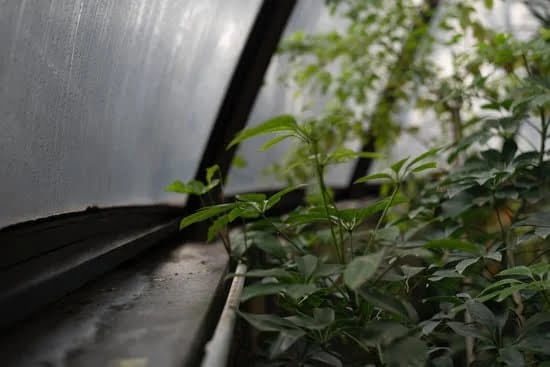Gardening around a tree can be a rewarding and creative way to enhance the beauty of your outdoor space. In this article, we will explore various ideas and tips for creating a stunning garden bed around a tree that is not only visually appealing but also functional. From selecting the right plants to incorporating hardscape features and attracting wildlife, there are endless possibilities for transforming the area around a tree into a thriving and picturesque garden.
When it comes to gardening around trees, it’s important to consider factors such as shade and the root system of the tree. By choosing the right plants and implementing proper soil preparation techniques, you can create a lush and vibrant garden that complements the natural landscape. Additionally, creating a garden bed around a tree offers an opportunity to add visual interest and focal points to your outdoor space, making it a perfect setting for relaxation and enjoyment.
Whether you’re an experienced gardener or just getting started, this article will provide valuable insights into designing, maintaining, and enhancing a tree garden. From mulching practices to wildlife attraction, each section will offer practical advice and inspiration for anyone looking to elevate their gardening efforts in a naturalistic setting. So let’s dive into the world of gardening around trees and discover how you can create your own oasis of greenery and beauty.
Choosing the Right Plants
When selecting plants for gardening around a tree, it’s important to consider the unique conditions of the space. Not only do you need to take into account the shade provided by the tree, but also the root system that lies beneath the soil. The key is to choose plants that can thrive despite these challenges.
For shaded areas, look for plants that are known for their tolerance to low light conditions. Shade-loving perennials like hostas, ferns, and astilbes are excellent choices as they not only add beauty to the garden but also require minimal sunlight to flourish. Additionally, ground covers such as vinca or lamium can provide a lush carpet of greenery under the tree while helping to suppress weeds.
When it comes to dealing with a tree’s root system, opt for plants with shallow root systems or those that can coexist with the tree roots without competing for nutrients. Some ideas include ornamental grasses like hakonechloa or carex, which have non-invasive roots and can create a soft and feathery texture in the garden bed. Another option is to use container plants or raised beds to minimize root interference and allow for better control over soil conditions.
It’s also crucial to avoid planting anything too close to the tree trunk, as this can cause damage to both the plant and the tree itself. By carefully considering the shade and root system of your tree, you can choose suitable plants that will thrive in this unique gardening environment.
| Plants | Considerations |
|---|---|
| Hostas, ferns, astilbes | Shade tolerant, low light conditions |
| Vinca, lamium | Ground cover, weed suppression |
| Hakonechloa, carex | Shallow roots, soft texture |
Designing a Garden Bed
Consider the Tree’s Needs
When designing a garden bed around a tree, it’s important to take into account the needs of the tree itself. Consider the type of tree you are working with and its specific requirements for water, light, and nutrients. Some trees have shallow root systems that may be damaged by digging or planting too close to the trunk, so it’s important to research the characteristics of your particular tree species before starting your garden design.
Choose Complementary Plants
One of the key aspects of designing a successful garden bed around a tree is choosing plants that will thrive in the conditions created by the tree’s shade and root system. Look for shade-tolerant perennials, groundcovers, and shrubs that will not only survive but also enhance the beauty of the space. Some popular choices for underplanting trees include hostas, ferns, coral bells, and creeping phlox.
Create Layers and Textures
To create visual interest and depth in your tree garden, consider incorporating plants with different heights, colors, and textures. Layering plants with varying heights can create a sense of lushness and fullness in the garden bed, while mixing different foliage textures can add visual appeal. Additionally, adding mulch or decorative rocks can help define different areas within the garden bed and create a cohesive overall design.
By carefully considering these tips for designing a garden bed around a tree, you can create a beautiful and functional space that enhances both the tree itself and your overall outdoor environment. With thoughtful plant selection, attention to detail in creating layers and textures, and consideration for your tree’s specific needs, you can transform your tree’s surroundings into an inviting and visually appealing garden space.
Mulching and Soil Preparation
When gardening around a tree, one of the most important aspects to consider is mulching and soil preparation. The right mulch can help retain moisture, suppress weeds, and regulate soil temperature – all essential for the health of both your garden plants and the tree itself. When choosing mulch, opt for organic materials like wood chips, shredded bark, or compost, as these will gradually break down and improve the soil structure.
In addition to mulching, proper soil preparation is crucial for the success of a tree-adjacent garden. Before planting, take the time to loosen the soil and amend it with organic matter such as compost or well-rotted manure. This will improve drainage, enhance nutrient levels, and create a favorable environment for plant roots to thrive. Be mindful of the tree’s root system when digging in the area around it – disturbing too many roots can harm the tree.
Aside from enhancing plant growth, good soil preparation also contributes to overall ecosystem health by promoting beneficial microorganisms in the soil and preventing erosion.
| Mulching Benefits | Soil Preparation Tips |
|---|---|
| Retains moisture | Loosen the soil before planting |
| Suppresses weeds | Amend with organic matter such as compost or manure |
| Regulates soil temperature | Avoid disturbing tree roots |
By implementing best practices for mulching and soil preparation in your tree-adjacent garden, you can create a healthy and thriving environment for both your plants and the tree itself. Remember to regularly check on your garden to ensure that it continues to flourish over time. With proper care and attention, you can enjoy a beautiful and sustainable garden around your tree for years to come.
Maintenance and Care
Maintaining a garden around a tree requires regular care to ensure that the plants remain healthy and continue to thrive. From watering and weeding to fertilizing and pruning, there are several key tasks that can help keep your tree garden looking its best.
Watering and Weeding
Adequate watering is essential for the health of any garden, and this is especially true for gardens around trees. Tree roots can compete with nearby plants for water, so it’s important to water the garden bed thoroughly, ensuring that the moisture penetrates deeply into the soil. Additionally, regular weeding is necessary to prevent unwanted plants from competing with your chosen flora for nutrients and water.
Fertilizing and Pruning
Fertilizing your tree garden can help replenish nutrients in the soil that may become depleted over time. When choosing a fertilizer, consider using a slow-release option to provide a steady supply of nutrients to your plants. In terms of pruning, it’s important to regularly trim back any overgrown or dead foliage in order to promote healthy growth and maintain an attractive appearance for your garden.
Pest Control
When caring for a tree-adjacent garden, it’s also crucial to be mindful of potential pest issues. Regularly inspect your plants for signs of insect damage or disease, and take appropriate measures such as applying organic pest control solutions if needed. By staying proactive in monitoring and addressing pest issues, you can help protect the health and vitality of your tree garden.
By following these maintenance tips, you can ensure that your garden around a tree remains healthy and vibrant year-round. With proper care, your carefully selected plants will continue to flourish, creating a beautiful outdoor space that enhances the natural beauty of the tree itself.
Creating a Focal Point
Adding a focal point to the garden around a tree can bring visual interest and enhance the overall aesthetics of the space. When considering ideas for gardening around a tree, creating a focal point is essential to draw attention and create a cohesive design.
One way to do this is by incorporating a striking, ornamental feature such as a sculpture, birdbath, or decorative rock formation. These elements can serve as eye-catching centerpieces that complement the natural beauty of the tree and its surroundings.
Another way to add visual interest to the garden around a tree is by introducing colorful and vibrant flowering plants. By selecting blooms in varying heights, shapes, and textures, you can create layers of visual interest that highlight the tree and provide an attractive backdrop for the garden. Consider planting flowers like begonias, impatiens, or petunias that will thrive in the shade provided by the tree’s canopy while adding pops of color to the landscape.
In addition to ornamental features and flowering plants, incorporating unique and creative garden structures can help create a focal point in the tree garden. Arbors, trellises, or even carefully placed seating areas can serve as focal points that not only add visual interest but also offer functional benefits.
These structures can define specific areas within the garden while also providing opportunities for climbing vines, hanging baskets, or sitting areas where one can enjoy the beauty of both the tree and its surrounding garden. Ultimately, these ideas for gardening around a tree can help create visually appealing focal points that elevate the overall design of the space while accentuating the natural beauty of the tree.
Incorporating Hardscape Features
When it comes to gardening around a tree, incorporating hardscape features can greatly enhance the overall look and feel of the space. Adding pathways, benches, or decorative items can not only create visual interest but also provide functionality and accessibility to your tree garden. Here are some ideas for incorporating hardscape features in your tree garden:
- Pathways: Creating a winding pathway around the base of the tree can add structure and flow to the garden. Whether using natural materials like gravel or stone pavers, pathways can guide visitors through the garden and prevent trampling on delicate plants. Consider adding solar-powered pathway lights for an enchanting evening ambiance.
- Benches: A strategically placed bench can provide a resting spot for enjoying the beauty of your tree garden. Whether under the shade of the tree’s canopy or along a pathway with a view, a bench invites relaxation and contemplation. Choose durable materials that complement your garden’s aesthetic such as wood, wrought iron, or weather-resistant resin.
- Decorative Items: Including decorative items such as sculptures, birdbaths, or ornamental planters can add personality and charm to your tree garden. These elements can serve as focal points or accents that reflect your personal style and interests. When selecting decorative items, be mindful of scale and placement to ensure they harmonize with your garden’s design.
Incorporating these hardscape features in your tree garden can elevate its overall appeal while providing practical benefits for both you and your visitors. Whether guiding paths, providing rest spots with benches, or adding personality with decorative items, hardscaping enhances the experience of gardening around a tree while creating an inviting outdoor space.
Wildlife Attraction
Adding wildlife attraction to your tree garden can create a vibrant and dynamic ecosystem. By incorporating elements that attract birds, butterflies, and other creatures, you can enhance the overall beauty and biodiversity of your garden. Here are some ideas for attracting wildlife to your tree garden:
- Plant native flowering plants: Choose a variety of native flowers that provide nectar and pollen for bees, butterflies, and other pollinators. Consider planting species such as coneflowers, black-eyed Susans, and butterfly bushes to attract butterflies and hummingbirds.
- Install bird feeders and baths: Hang bird feeders filled with seeds or suet in or near your tree garden to attract a diverse range of bird species. Additionally, consider adding a birdbath to provide a source of water for birds to drink and bathe.
- Create habitat structures: Incorporate birdhouses, bat houses, and insect hotels into your tree garden to provide shelter for wildlife. These structures can attract nesting birds, bats, and beneficial insects that contribute to a healthy ecosystem.
In addition to these ideas, you can also research specific plant species that are known for attracting certain types of wildlife. By carefully selecting plants that cater to the needs of various creatures, you can create a thriving wildlife habitat in your tree garden. With proper care and attention, you will be able to enjoy the sight of beautiful butterflies fluttering among the flowers and the melodious songs of birds making their home in your garden.
Final Thoughts
Gardening around a tree offers numerous rewards and benefits that go beyond just creating a visually appealing space. With careful plant selection, thoughtful design, and ongoing maintenance, you can create a harmonious ecosystem that not only enhances the beauty of your tree but also contributes to the overall health of your garden.
By following the tips and ideas for gardening around a tree discussed in this article, you can transform the area around your tree into a beautiful and thriving garden bed.
One of the key benefits of gardening around a tree is the opportunity to maximize the use of space in your yard. By utilizing the often underutilized area around a tree, you can expand your gardening capabilities and add depth and diversity to your landscape. Additionally, creating a garden bed around a tree can help improve soil health by reducing erosion, increasing moisture retention, and promoting beneficial microbial activity.
Furthermore, gardening around trees provides an excellent opportunity to connect with nature and observe its wonders up close. By incorporating wildlife-attracting plants and features such as bird feeders or butterfly-friendly flowers, you can create a haven for various creatures in your own backyard. Overall, the rewards of gardening around a tree are plentiful, making it an enriching and satisfying endeavor for any gardener.
Frequently Asked Questions
What Is the Best Thing to Put Around the Base of a Tree?
The best thing to put around the base of a tree is mulch. Mulch helps retain moisture, suppresses weeds, and provides insulation for the tree’s roots. It also adds nutrients to the soil as it decomposes.
How Do You Garden Around a Tree?
When gardening around a tree, it’s important to be mindful of the tree’s root system. You can create a garden bed around the tree by using raised beds or planting shade-tolerant plants. Make sure not to disturb the tree’s roots while planting or digging.
What Is the Best Edging for Around a Tree?
One of the best edging options for around a tree is brick or stone edging. This provides a barrier between the tree and surrounding garden or lawn, preventing roots from spreading into unwanted areas. It also adds a decorative touch to the landscape and can help retain mulch around the base of the tree.

Welcome to my gardening blog! I am passionate about plants and enjoy sharing my knowledge and experiences with others. In this blog, I will write about everything related to gardening, from tips on how to get started to updates on my own garden projects.





